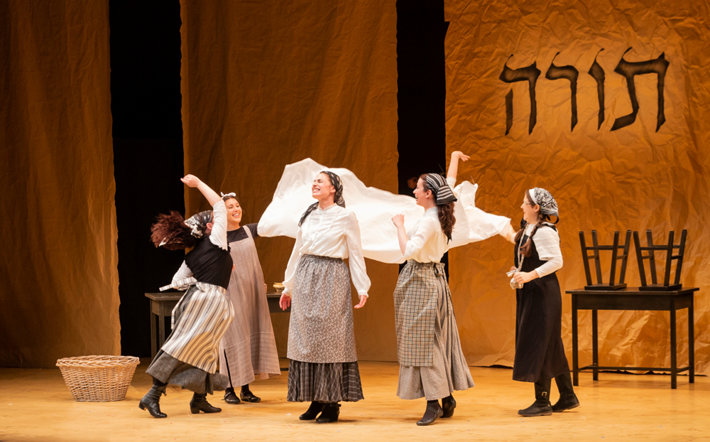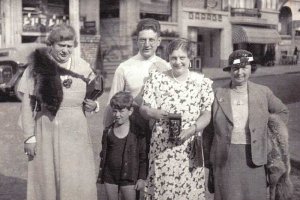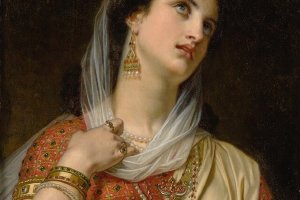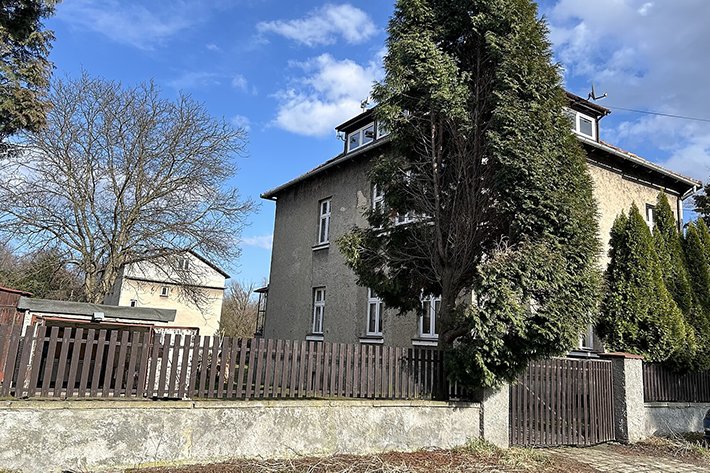
My brother’s first language was Yiddish. Born during the Second World War, he spent his first two years at our grandparents’ house where Yiddish was the only language heard or spoken. So when my Dad came back from overseas his first conversation with his first-born child was not in English but Yiddish.
Before the Holocaust, Yiddish was the language of the Jewish people—Hebrew, the language of the Bible, being considered too sacred for everyday talk. Yiddish is a millennium-old gumbo of High German, Hebrew, Ukrainian, Polish, Aramaic plus a teaspoon of assorted romance languages with a dash of English added in the past century. The very word—Yiddish—means “Jewish” in Yiddish.
As the dominant language of the Central and East European Ashkenazi world, Yiddish was the woof and warp of Jewish life. Authors such as the great Sholom Aleichem, whose stories became the basis for Fiddler On The Roof, wrote exclusively in Yiddish. The Yiddish theatre in New York City—with stars like the great Jacob Adler performing King Lear in Yiddish while the rest of the cast used Shakespeare’s language—rivaled Broadway in attendance in the early part of the last century.
And it was Yiddish that, along with 6 million Jews, was a casualty of the Holocaust, its utter extinction almost completed by Jews themselves. When the new Jewish homeland came into existence, it was Hebrew, not Yiddish, that—modernized, polished, desanctified and made conversational—came into its own as the official language of Israel.
Yiddish, stigmatized as the “old” tongue, associated with death camps and torture, fell into disuse—a tool to be used by the older generation mostly as a means to talk to each other in front of the children when they didn’t wish to be understood.
But Yiddish wouldn’t go away. It had already insinuated itself into American life; its rhythms and cadences living on in the punchlines of Jewish comedians like Henny Youngman, Shelly Berman, Jackie Mason and myriad others—words like kvetch, klutz, glitch, schmooze, nosh, putz, schlep and that all-time favorite, oy vey entering the lexicon. And popular TV series like The Marvelous Mrs. Maisel and films like Dirty Dancing celebrate the Yiddish “vibe” that refused to die.
The only thing missing was the language itself.
But in an ironic twist, the current alarming surge in overt antisemitism has triggered a groundswell of Jewish pride, and along with that, Yiddish has made a comeback—not as a gag, not as a sweet reminiscence of Bubbe’s gefilte fish and blintzes, not even as a supporting actor’s accent as a witness in a TV murder mystery—but as a living, breathing modern world language. Well, almost modern.
Are the growing proliferation of Yiddish learning apps and podcasts that began during the pandemic a response in defiance to the attacks on synagogues, the beatings of civilians, the pro-Hitler freeway banners, the neo-Nazi parades, the distribution of swastika flyers, and all the other symptoms of enabled hate? Or is it a coincidence—a deep and primal need to reconnect with something ancestral and purely Jewish, transcending generations and geography, that just happened to bloom at just the right time?
Well, to put it in Yiddish, Afshr yo, afshr nit ober tut es take enin? Maybe yes, maybe no, but does it really matter?.
Some examples of the Yiddish Renaissance:
Florida-based Avi Hoffman teaches Yiddish online from his home in Miami. To him, the preservation of the ancient language is crucial to the Jewish heritage. “We have to stand up because, you know what? We’ve already seen this movie,” he says, in a not-so-veiled allusion to the early-20th-century hate on both sides of the Atlantic that led to and prolonged the Holocaust.
In New York, a Brooklyn-based chef runs a “Gefilteria” website with the slogan “Leading the Jewish Food Revival.” Its mission statement crystal clear: “Jewish delis were closing. Our grandparents were getting too old to cook. Ashkenazi cuisine was perceived as a thing of the past, if perceived as a cuisine at all. We were friends in the food world, and we heard the call. It felt like something big was at stake. It all started with a manifesto, and we’ve never looked back.” Gefilteria offers traditional, non-mass-produced gefilte fish for sale along with cooking classes and catering in the Ashkenazic style with a new spin on old favorites.
And in San Diego, a “Yiddishland” cultural center seeks funds to re-create an Eastern European shtetl (a small Jewish town or village in eastern Europe) that will serve as an immersive hotel for guests, with Yiddish-themed breakfasts and a platform for those who want a traditional Yiddish wedding. There are Yiddish classes, a Yiddish theater academy, klezmer (traditional Eastern European music) and a gallery with artifacts and Jewish-themed paintings by Yiddish-speaking artists.
Director Jana Mazurkiewicz Meisarosh created Yiddishland mainly out of wistful longing for a language that her grandmother spoke but that she didn’t understand as a young girl growing up in Poland.
“I started to ask questions: ‘Why were we not introduced to this language and culture? Why were we only taught Hebrew in school?’” Mazurkiewicz Meisarosh said. “I would like Yiddish to survive. If not our generation, who is going to do it?”
Over Yiddishland’s two-year existence, she noticed that non-Jews were also visiting the center, including her 6-year-old daughter’s African American and South Asian schoolmates. It then dawned on her that Yiddishland was a powerful weapon to combat antisemitism.
“People fear what they don’t know,” she said. “If they can come here and learn, it’s a powerful weapon. It has to become part of mass culture.”
Michelle Obama said, “I’ve learned that it’s harder to hate up close.”
It may then come to
pass that Yiddish, reborn and singing in the voices of multitudes, will indeed
crowd in close to the mass culture—through the arts, cuisine, and
language—becoming the much-needed secret weapon that secures Judaism’s
survival, just as it has helped it survive for so many centuries before.
_______________
From its beginnings, the Church of Scientology has recognized that freedom of religion is a fundamental human right. In a world where conflicts are often traceable to intolerance of others’ religious beliefs and practices, the Church has, for more than 50 years, made the preservation of religious liberty an overriding concern.
The Church publishes this blog to help create a better understanding of the freedom of religion and belief and provide news on religious freedom and issues affecting this freedom around the world.
The Founder of the Scientology religion is L. Ron Hubbard and Mr. David Miscavige is the religion’s ecclesiastical leader.
For more information, visit the Scientology website or Scientology Network.


